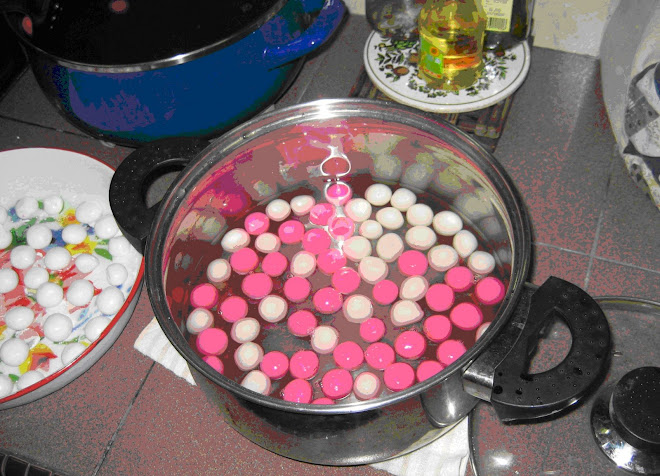Having just returned from Singapore and Malaysia where the mooncake is seeing a modern revival, I was blown away by the breadth of variety of these suckers. I was hooked. The mooncakes in Asia are like pieces of mini art works – the pastry skin takes on the intricate carvings of flowers and Chinese calligraphy and the fillings infinite and cleverly combined with western ingredients. I also had to justify my recent horde of mooncake moulds – what good are they sitting in the cupboard?
I happened to buy a Malaysian food magazine, Flavours at the airport on the way back to Australia. My mooncake obsession could take hold – there was a spread on mooncakes and recipes. What luck! So today, I made my first batch of mooncake dough. I didn’t want to make both dough and filling – thought I’d take baby steps first. I’m not the best of bakers – most of my baking expeditions veer off in unexpected tangents! I used a peanut-shaped mould, a traditional calligraphy mould and a tablet shaped mould.
The peach-shaped calligraphy mould was by far the most diffcult mould to use. The dough stuck furiously to its sides and it took a bit of beating mould on bench to unmould the sticky stuff.

(golden syrup, lye water and oil mix resting)
I have used the dough on its own as biscuits although its purpose is to form a skin around fillings. The dough works quite well on its own though a bit sweet. I divided my dough and mixed half of it with a mixture of grated nutmeg and ground cinnamon for a slightly spicy flavour.

(this is the shiniest dough mix ever!)

(pre-oven specimens)
My version puffed up about double and as a result, lost most of its intricate patterns. Perhaps I put too much sodium bicarbonate in? Or maybe with a filling the dough keeps its shape better. I will make some lotus paste for the next batch and see what happens. The texture is pretty good, it's slightly chewy and spicy from nutmeg and cinnamon - not unlike a German Christmas cookie!

(post-oven specimens)
Here is Flavours basic mooncake dough recipe.
250ml golden syrup
110ml peanut oil (I substituted this with canola oil)
1tsp alkaline (lye) water
430g plain flour sifted
¼tsp sodium bicarbonate
1 egg lightly beaten for egg wash
Mix golden syrup, oil and lye water in a bowl until well combined. Cover with cling film and set aside for 1 hour.
Sift in flour and sodium bicarbonate . Mix to firm a dough – if the dough is too sticky, work in 1 to 2 tbsp flour. When the dough looks shiny and smooth, cover with cling film and rest for another hour before filling and shaping.
Baking: Preheat oven to 170°C. Place shaped mooncake biscuits on greased or greaseproof lined tray. Bake for 10 minutes. Remove and brush with egg wash. Lower heat to 160°C and bake another 10 minutes. Remove from oven when biscuits are golden brown.

No comments:
Post a Comment